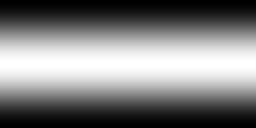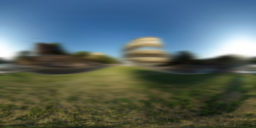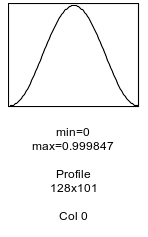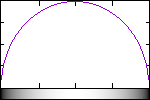since there is not so much around about this specific task of consistently blur an equirectangular image (ratio 2:1),
here I am to ask what can be automatised via IM and what's my current status.

First off, before applying a gaussain blur, there is the classical method of side-duplicating (append) to the left and to the right the same image and then apply the blur pass, this will create consistent blur around left and right edges (wrap blur).
So far looks quite good: this is what I've done until now.
The problem is: the gaussian blur is non-consistent when the equirectangular is re-mapped to a 3D sphere (i.e. texturized).
This is obvious due to geometrical distortions around the poles: they are "shrinked" thus reducing the applied blur strength.
So how can one apply a consistent gaussian blur, for a spherical mapping?
My ideas so far are related to application of dual polar and depolar transformations, but maybe there are other routes.





